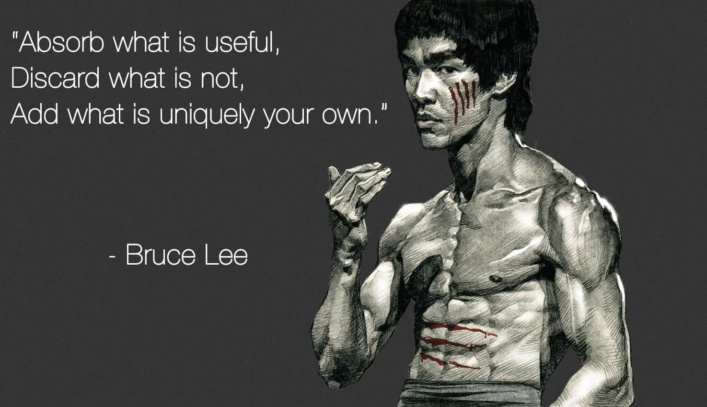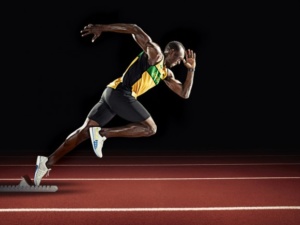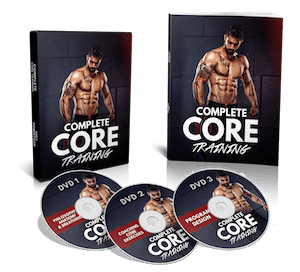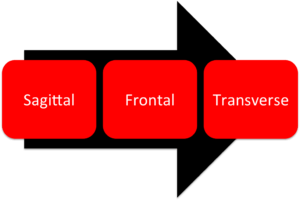
(Lead photo courtesy of Keith Allison)
One thing I’ve always tried to do is grow and evolve as a coach.
When you’re just getting started you’re somewhat limited in your perspective, and we all have a tendency to model the coaches we spent time with early on.
When I started coaching I was strongly influenced by powerlifting, as I not only competed in the sport but was surrounded by powerlifters.
I don’t look at this in any way, shape or form as a bad thing.
On the contrary, because of my powerlifting background, I’m very confident in my coaching ability when it comes to the weight room. That’s directly tied to the amount of time I spent lifting weights and learning about technique.
Yet as we grow and evolve, it’s on us to apply the Bruce Lee quote:

(And for those of you keeping track at home, yes, I’ve quoted Bruce Lee each of the last two weeks!)
Because let’s be honest – if you have any modicum of success, it’s really easy to get complacent and fall back on what we’ve always done in the past.
So for me, it’s been a goal to develop better athletes, not just better powerlifters.
Now here’s a key distinction between powerlifters and athletes:
Athletes not only need to train numerous physical qualities, but they often need to move in multiple planes as well.
And the real key to many athletic movements is the ability to alternate.
Whether it’s cranking 350 yard drives like Dustin Johnson, throwing gas like Aroldis Chapman, or smashing forehands and backhands like Roger Federer, great athletes know how to alternate.
So what is “alternating function?” I’m glad you asked…
What is Alternating Function?
I’ve always been a big believer in watching sports to better understand movement. And after watching a ton of high-level athletes perform, I came upon a realization:
 The best athletes in the world have the ability to separate their hips. In other words, one hip can maximally flex, while simultaneously extending the opposite hip.
The best athletes in the world have the ability to separate their hips. In other words, one hip can maximally flex, while simultaneously extending the opposite hip.
And while I still look at hip separation, another critical aspect of athletic development is the ability to alternate.
Alternating function is a term I’ve picked up from PRI. While hip separation occurs in the sagital plane (flexion/extension), alternating function is tri-planar in nature and connects the upper and lower extremities.
I like to think of alternating function in two ways:
- The ability to separate or perform opposing patterns between the same side hip and shoulder. Example: Internally rotating the right hip while externally rotating the right shoulder.
- The ability to coordinate movement patterns between opposite hip and shoulder. Example: Externally rotating the right shoulder and left hip, while internally rotating the left shoulder and right hip.
Let me give you an example that I think will help. First, watch this video of Zach Greinke pitching.
There’s a lot going on here but let’s take it step-by-step:
- (0:00-0:05 seconds) The right hip is adducting and internally rotating at the start to load the right glute max.
- (0:05-:26 seconds) From there, the right hip abducts and externally rotates to generate power from the lower half. (Obviously far more stuff is happening here, but I’m not trying to overwhelm anyone!)
- (0:28 seconds) The weight shifts to the left leg, where the left hip begins to internally rotate to control and redirect the force. This also helps engage the left ab wall.
- (0:28-0:29 seconds) That left ab wall anchors the left rib cage and pelvis, which allows the trunk to rotate to the right and the right shoulder to externally rotate.
- (0:29-End) As he follows throw, you see internal rotation of the right shoulder, rib cage and hips.
Now let’s break this down into big chunks.
In alternating function, when the right hip is internally rotating, the right trunk and rib cage are externally rotating (or vice versa).
Or looking at things in a cross-body pattern, the right hip and left shoulder are internally rotating, while the left hip and right shoulder are externally rotating.
If it’s confusing at first, stick with it. It took me quite a while to really put all the pieces together.
Now that you have an idea of what alternating function is, let’s discuss why you might want to train it.
Why is Alternating Function Important?
The next question becomes, “why is alternating function important?”
If you train athletes, the answer should be obvious:
Athletes need the ability to rotate their trunk, especially if they play rotary sports such as volleyball, baseball, tennis or golf.
But I would argue than any athlete who runs needs the ability to alternate effectively. At its core, alternating function is gait.
This is even more important if you have to change direction or move side-to-side in your sport.
Like all things in life, just because athletes may need alternating function doesn’t mean they all need it to the same degree.
A sprinter who only runs the 100-meter dash needs far less alternating function than a basketball player.
The 100-meter dash is straight ahead, with no need to change directions. In contrast, a point-guard in basketball will need more alternating function to change levels, move side-to-side, etc.
Last but not least, what physical qualities do we need before training alternating function?
Alternating Function Prerequisites
When you look at complex movements in sport, you realize that numerous things are going on simultaneously.
For instance in our baseball throw above, we talked about the ability to rotate the hips, rotate the shoulders, stabilize the core, etc.
And when it comes to breaking these movements down, it helps to think of them like prerequisites to take higher level courses in school.
Before you take algebra, you have to be able to add, subtract, multiply and divide.
The human body works in much the same way.You have physical prerequisites that give you the capacity to tie those complex movements together.
So what are the prerequisites to alternating function? Here are just a few.
Thorax Rotation
For many years I beat the drum of getting more and more thoracic spine extension.
And yes, I think you need a neutral (NOTE: I did not say extended OR flexed) thoracic spine to rotate effectively.
But extended clients and athletes have a tendency to drive that extension up top as well as down below.
They’re not only sitting on an anterior pelvic tilt and lumbar lordosis, but they’re also rocking an extended thorax as well.
Now here’s a key distinction: I’m not talking about the thoracic spine, per se.
I’m looking at the entire trunk/thorax!
When that thorax gets pushed forward relative to the hips, not only do we lose our ideal core position, but we also lose our ability to rotate up top as well.
Try this if you don’t believe me. Wherever you’re reading this, slouch over and try to rotate through your upper back.
No bueno, right?
But we already knew that. A flexed thorax/thoracic spine doesn’t rotate well.
Now try this.
Sit up as tall as you can, and puff your chest out like you’re going to squat or deadlift.
Now try rotating through your upper back.
Crazy, huh?
If you want to rotate your thorax, you need to get your thorax back to neutral.
And this involves getting air into the back side of your body.
Posterior Mediastinum (PM) Expansion
If someone is rocking an extended thorax, we need to drive air into the back side of their body to restore optimal position.
In other words, they need to learn about thoracic flexion via an exhale.
But once that exhale is set, where they drive air is critical.
Too often, extended bro may knock out a solid exhale. But when they go to inhale, they immediately default back to an extension pattern to “pull” air into the body.
 If you’ve seen my Complete Core Training DVD and manual, you realize this is why I put a ton of reaching exercises into both my core training and breathing exercises.
If you’ve seen my Complete Core Training DVD and manual, you realize this is why I put a ton of reaching exercises into both my core training and breathing exercises.
(And if you don’t have a copy, what are you waiting for?!?!?!)
When you reach, you lock down the front side of the body in an effort to drive air to the back.
Once you start to drive air into the back side of the body, you restore thoracic flexion.
And once you drive thoracic flexion, as the saying goes, “that’s when the magic happens.”
- You restore the natural kyphosis to the upper back,
- Your scapulae have a “home” to rest on,
- You can finally rest and not do 1,000 serratus anterior exercises to “fix” your winging scapulae,
- And with regards to this article, you can rotate your trunk/thorax again!
In many ways, posterior mediastinum expansion is the prerequisite to thorax rotation. PM expansion drives optimal ribcage and thorax position.
Because if you don’t have position first, good luck getting the function you want.
Multi-Planar Abs
Last but not least, when we talk about rotation at the hips and shoulders, we need to talk about abs.
Abs are the tie that binds our hips and shoulders together.
But when it comes to the abs, they are also the muscles that set position for our rib cage and pelvis in the first place!
The progression for our core and abdominal work is no different than what we’ve discussed in the past:

In other words, we need sagittal plane abs first. Sagittal abs put our pelvis and rib cage in the appropriate position, so that we can move in the frontal and transverse planes.
Next, we need frontal plane abs. Down below, this will work as our anchor to set our feet and shift our weight from side-to-side.
Last but not least, we need those transverse plane abs to dissociate the hips and shoulders, and alternate the way that we want.
Remember what I said above: If you want to rotate your trunk up top, you need to be able to secure and anchor those abs in all three planes down below.
Now I haven’t talked a lot about pure rotation at the hip and shoulder joint, but I’m also not sure I need to talk specifically about that.
Chances are if you get true multi-planar ab function, you’re probably going to restore the bulk of the hip and shoulder rotation you need.
Okay, so that was quite a write up but I hope it gives you a better understanding of why alternating function is so critical.
Now that we’ve covered that, let’s look at a handful of my favorite alternating exercises.
Variations and Exercises
When it comes to alternating work, you’ll see the bulk of the exercises are:
- Unilateral,
- Performed in a half-kneeling or split-stance posture, and
- Drive either frontal or transverse plane motion.
With that being said, you’ll see in the exericses below that:
- I’m trying to lock down the core/midsection, to give myself an anchor to rotate on up top.
- I’m training stability from the midsection down (although in higher level you can absolutely make things more dynamic).
- And the rotation isn’t just coming from the shoulders up top, but through the thorax and trunk.
So without any further ado, here are a handful of alternating exercises you can try today!
Half-Kneeling Landmine Press
I’m a huge fan of the landmine press, especially when it comes to reaching and alternating exercises.
In this variation, make sure to stay stable through the core, hips and pelvis, while focusing on a nice reach at the midpoint of each rep.
Split-Stance Landmine Press
The split-stance variation of this exercise is a bit more challenging, as you have a higher center of gravity and need to stabilize and control more joints.
Half-Kneeling Cable Press
While the landmine is a fantastic tool, not everyone has access to it.
Furthermore, the more vertical you get with your pressing/pulling, the more frontal plane motion you get.
At times, you may want more transverse plane function – which is very cable presses come into play.
Split-Stance Cable Press
A step up from the half-kneeling variation, this version is again more challenging due to increased demands for stability and control.
Short Seated Lat Pulldown
This is an exercise I stole borrowed from Bill Hartman. We programmed it for one of our pros that came into IFAST, and I absolutely fell in love with the exercise.
The only downside is that you need a FreeMotion (or similar piece of equipment) to pull it off.
This is an awesome exercise for numerous reasons:
- The short-seated position here allows your lat to be a shoulder extensor, versus a back extensor.
- When you inhale at the top (filling the posterior mediastinum) you drive airflow into the upper back.
- When you pull down you drive some serious frontal plane alternating motion as well.
Give this a shot for a set, and then try this ninja trick for maximum effectiveness:
When you exhale and squeeze down in the the bottom, don’t just squeeze elbow down, but simultaneously reach long with the opposite arm/shoulder.
Now there’s some real frontal plane alternating function for ya!
Tall-Kneeling, Alternating, Single-Arm Lat Pulldown
I realize that you may be feeling left out if you don’t have a FreeMotion machine, so here’s a similar exercise that works very similarly in any standard cable machine.
Set-up in a tall-kneeling position with one arm holding a D-handle attachment.
Just like above, inhale into the back and then exhale and squeeze down. As you squeeze down, reach long with the opposite arm.
While I like the above version a bit better for alternating function, this has an added core training element that I think you’ll love. Give it a shot!
Summary
Alternating function is something that everyone should be training.
You may not need the amount of motion that an elite golfer or baseball pitcher possesses, but if you’re locked up and you get these pieces moving together again, you’re going to move and feel great as a result.
One last thing: If you enjoyed this article, please take a moment to pass it along to someone else who may benefit.
Thanks for your support and get to alternating!
All the best
MR
